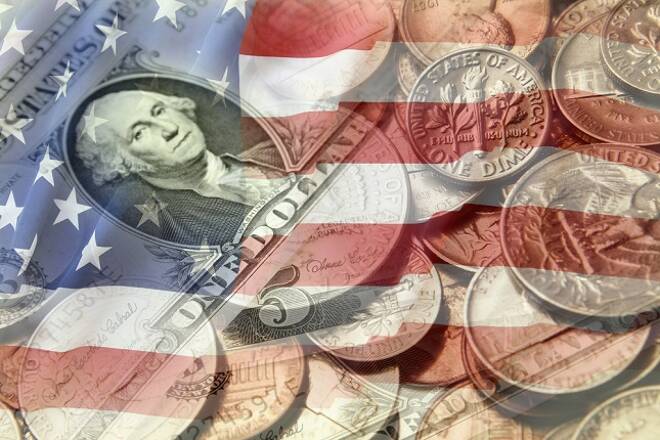Advertisement
Advertisement
U.S. Global Trade Disputes: The Past, The Present, The Future
By:
In a positive trade move, the U.S. and Mexico struck a trade deal last Monday that paved the way to replace the North American Free Trade Agreement (NAFTA). Currently, the United States shares this deal with Mexico and Canada. With trade talks between the United States and Canada ending on Friday without a new trade deal. The future trade deals involve the European Union and China. Once the deal is completed with Canada, the U.S. will likely finalize a deal with the EU. China will just have to wait especially if it continues to play hardball with the U.S.
Trade issues dominated the news last week, which set traders on edge. There was positive news, not so good trade news, not so bad news, potentially good news and potentially bad news. Before you try to figure out the impact of all this news on the markets, I think you have to categorize the news into the past, the present and the future.
The Past
In a positive trade move, the U.S. and Mexico struck a trade deal last Monday that paved the way to replace the North American Free Trade Agreement (NAFTA). Currently, the United States shares this deal with Mexico and Canada.
The new deal is scheduled to last 16 years and will be reviewed every six years. The plan will not cap imports of light vehicles from Mexico, but keeps the steel and aluminum tariffs that are already in place. The deal must also be approved by Congress.
President Trump said the deal would be called The United States-Mexico Trade Agreement. Trump added that the deal will help farmers and manufacturers. “We’ve made it better” for both countries.
“We’re very excited about this agreement. We think it is going to lead to more trade, not less trade,” U.S. Trade Representative Robert Lighthizer said.
The Present
With trade talks between the United States and Canada ending on Friday without a new trade deal, and President Trump notifying Congress that he wants to sign a trade deal with Canada in 90 days, the period legally required to review a deal, it’s probably safe to say that these negotiations represent the present.
Friday’s negotiations between the United States and Canada were described as “tense”. At the start of the negotiations, Canada was handed an August 31 deadline to get it done or face further tariff consequences.
However, Canadian negotiators were thrown for a loop early Friday after President Trump’s private comments were leaked by the Toronto Star. This threw more uncertainty into the negotiating process at the last minute.
In remarks to Bloomberg News reporters Thursday that the president wanted to be off the record, Trump said he would not publicly state his position because “it’s going to be so insulting they’re not going to be able to make a deal,” according to the Star report.
Trump went on to add that “it’s just fine” if the U.S. does not make a deal with Canada. But he also tacked on a familiar threat to nudge Canada toward an agreement: tariffs.
Top Canadian trade negotiator Chrystia Freeland said that “with good will and flexibility on all sides, I know we can get” to a deal. But she stressed that Canada would not sign an agreement that it does not consider beneficial for its people.
“The government of Canada will not sign an agreement unless it’s good for Canada and good for Canadians,” she said.
Since the U.S. and Canada have agreed to continue negotiations, let’s call this the present.
In breaking news, on Saturday, Trump issued a new threat to terminate NAFTA altogether, warning Congress not to intervene in tough negotiations that may or may not include Canada in a new accord.
Future
The future trade deals involve the European Union and China. Once the deal is completed with Canada, the U.S. will likely finalize a deal with the EU. China will just have to wait especially if it continues to play hardball with the U.S.
Trade concerns spilled over to the European Union on Friday after Trump also said the European Union’s proposal to eliminate auto tariffs was “not good enough”. Does this mean additional tariffs on the EU are coming? I don’t think so, but it does raise concerns and uncertainty, two factors that move the dollar and equity markets.
For China, the future may come as early as this week after Bloomberg News reported that U.S. President Trump wanted to move ahead on a plan to impose tariffs on Chinese imports worth $200 billion next week.
With U.S. Preliminary Third Quarter GDP hitting 4.2 percent and the stock market at all-time highs, the U.S. can continue to step on the gas and rev up the pressure on China to come to the negotiation table with a list of concessions. The U.S. economy is in far-better shape than China’s economy to withstand a prolonged trade dispute. So we have other choice but to call the trade dispute with China a long-term or future event.
About the Author
James Hyerczykauthor
James Hyerczyk is a U.S. based seasoned technical analyst and educator with over 40 years of experience in market analysis and trading, specializing in chart patterns and price movement. He is the author of two books on technical analysis and has a background in both futures and stock markets.
Advertisement
